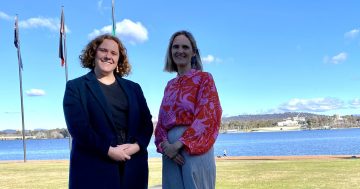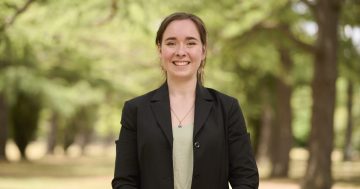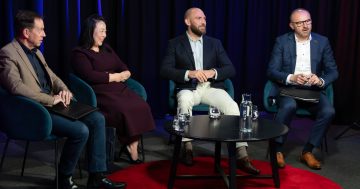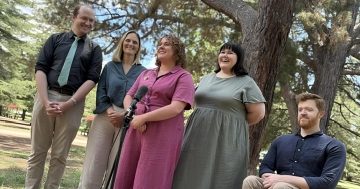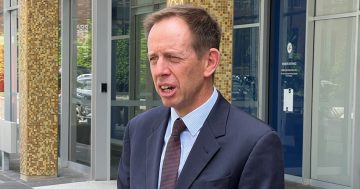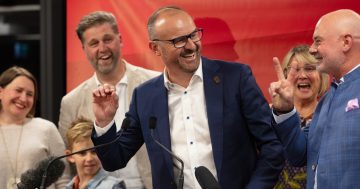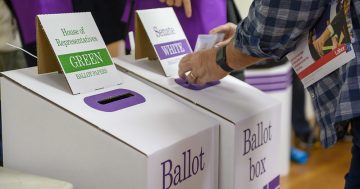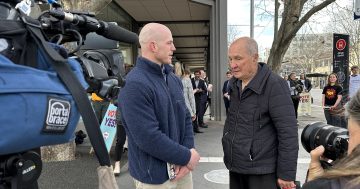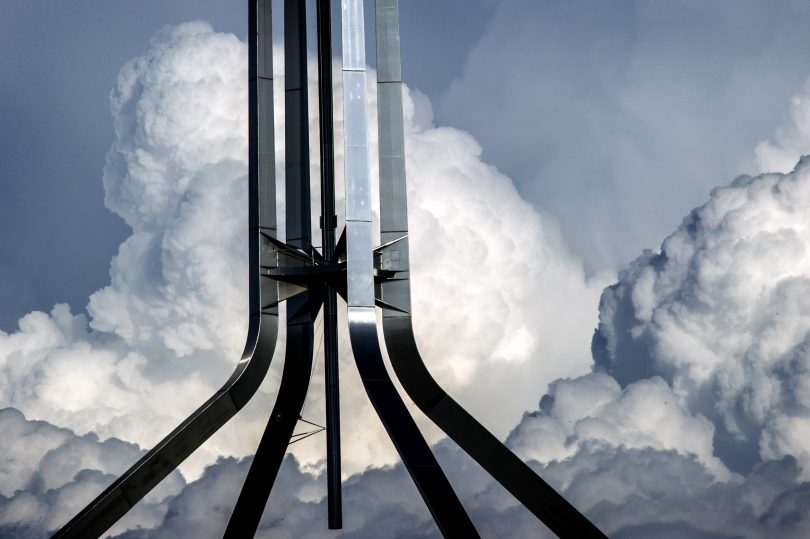
The next federal election has all the makings of a Labor-Green contest in the ACT. Photo: AUSPIC/DPS
“Looks like Killara, votes like Cessnock.”
Former prime minister John Howard was only partially right in his view of the ACT.
In broad, two-party preferred terms, over the longer haul, he was spot on. The high-income residents of the bush capital kept their House of Representatives seats substantially in Labor hands, just like those seats on the leafy north shore of Sydney were blue-ribbon Liberal.
But there is a critical difference.
The seat of Hunter (home to Cessnock) has not, in its various incarnations, returned anything other than Labor members since 1910.
The ACT has done so, albeit infrequently, showing a willingness for voters here to be swayed by circumstances or candidates. Indeed, its first Member of the House of Representatives, Dr Lewis Nott, was an Independent.
The first occasion when an ACT seat changed hands between the major parties was the nationwide landslide to the Liberal Party in 1975 at the election after the dismissal of the Whitlam Government. The ACT had (finally) received its second seat in 1974.
John Haslem, who campaigned under the well-deserved banner of “hard-working Haslem”, won the seat of Canberra for the Liberals in 1975 – and held it for two terms.
He was defeated in 1980 by Labor rising star Ros Kelly, whose political demise 15 years later in the “whiteboard affair” would be the second occasion that Labor lost an ACT Reps seat.
Whether it was disquiet at Kelly’s actions (major decisions on funding had been made with political advisers on a big whiteboard in her ministerial office), or the fact that she was part of a government deep in its fifth term with the national mood changing (or a combination of both), the swing ousting Labor was huge.
At the 1993 general election, Labor smashed the two-party preferred vote in Canberra, 59.56 to the Liberals’ 40.44.
In the 1995 by-election, popular Liberal Brendan Smyth won handsomely, 56.58 to 43.42 for Labor’s Sue Robinson, who only just got over 30 per cent of the primary vote.
A similar ACT turnaround occurred after the death in office of Labor’s popular Jim Fraser*, who won the 1969 general election with a primary vote of 39,070 over Liberal Robert Maher with 15,492.
At the by-election only seven months later, Labor candidate Kep Enderby was forced to the counting of preferences after receiving only 20,132 votes to Liberal Clarrie Hermes on 15,900. That’s almost a halving of Labor’s primary vote, much of it going to the Australia Party’s Alan Fitzgerald; the much-liked journalist (12.9 per cent of the primary vote), and the well-known Independent Jim Pead (14.4 per cent).
The situation in the countdown to the next federal election is ripe for another surprise for Labor.
As happened for one term of parliament in the 1990s, the ACT again has three seats.
And the numbers of recent years point to a thorough-going contest in the seat of Canberra.
The 2013 Senate primary vote results from booths in the new seat had the Greens less than 400 votes behind the Liberals and less than 2000 behind Labor.
If these results were replicated in the House, this seat would be a Labor-Green contest.
Recent history (ie by-elections in Batman and Wills) suggest people who vote Greens in the Senate start voting Greens in the House when their seat becomes winnable.
When a new seat with no incumbent has been created in strong Greens areas, the Greens have often won the seat: Newtown (NSW) in 2015, and Maiwar (Queensland) in 2017.
So, Canberra becomes a fair dinkum fight that could well see a second Green in the House of Representatives.
Disenchantment with the major parties is rife and Labor has the added disadvantage of being without a sitting member.
Gai Brodtmann, who held Canberra, is not contesting it on its new boundaries.
Beyond that, the local party appears factionally riven (including the recent defection of one sitting MLA), to say nothing of the friction over the Territory Senate seat after the constitutional ousting of Katy Gallagher.
It is significant that she has chosen to go again to the upper house.
Her cachet and recognition as a federal frontbencher and as a popular former Chief Minister would have been worth a considerable number of percentage points to Labor in the contest for Canberra, one might have thought.
Combine all that with the fact that the ACT is not dogmatically rusted on to the ALP (as history teaches), and you have a recipe for a real contest.
*Father of the writer.
Andrew Fraser is a criminal lawyer, former journalist and member of the ACT Greens.
What do you think will happen at the next election? Comment below.












